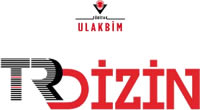Birlikte Değer Yaratma Bağlamında Türkiye Literatüründe Banksy: Eleştirel Bir Analiz
DOI:
https://doi.org/10.15659/jancr.v8i2.198Anahtar Kelimeler:
Pazarlama, Banksy, Birlikte Değer Yaratma, Eleştirel AnalizÖzet
Savaş karşıtı, çevre ve toplumsal olaylara duyarlı çalışmalarıyla tüm dünyada tanınan sokak sanatçısı Banksy son yıllarda Türkiye’de de akademik çalışmalara konu olmaktadır. Bristol kökenli bir sokak sanatçısı olan Banksy gizemini koruyan popüler bir figür olarak sanat, toplum ve ekonomi içinde çeşitli boyutlarda varlık göstermektedir. Bu çalışmada pazarlama perspektifinden Banksy’ye yönelik akademik bakışı analiz etmek, Banksy’nin akademideki imajını ve konumunu tespit etmek yanında Banksy’nin birlikte değer yaratma sürecinin bileşenlerini de ortaya koymak amaçlanmaktadır. Pazarlama perspektifinden Banksy’nin ele alındığı çalışmada, “Türkiye literatüründe Banksy nasıl konumlandırılmaktadır? ve Banksy’nin birlikte değer yaratma modeli nasıldır?” sorularına TR Dizin, Dergi Park, YÖKSİS ve Google Akademik taramaları sonucunda başlık ve anahtar kelimelerde “Banksy” kelimesini içeren 16 yayının nicel ve nitel içerik analizi yöntemiyle yanıt aranmış; bulguların değerlendirilmesinde eleştirel bir yaklaşım izlenmiştir. Türkiye’de Banksy’yi konu alan çalışmalar incelendiğinde literatürün, 2 tez, 1 kitap bölümü ve 13 makaleden oluştuğu saptanmıştır. Çalışmalarda sanat disiplininin ağırlığı yanında iletişim ve ekonomi disiplinlerinden araştırmacılarca da konunun ele alındığı görülmüştür. Söz konusu akademik çalışmalar kapsamında, Türkiye literatüründe Banksy ile ilgili eleştirilerin sınırlı olduğu görülmektedir. Akademik çalışmaların odak noktası, Banksy’nin kamusal alanda ve yeni medyadaki eserlerinin analizi, toplumdaki rolü ve ekonomik sistemdeki varlığı etrafında şekillenmektedir. Akademik yayınların “birlikte değer yaratma” sürecine dâhil olarak yeniden pazarlanmaya katkı sunduğu kabulüyle, özellikle popüler olay ve olguların incelendiği araştırmalarda eleştirel yaklaşımın arttırılması gerekliliği vurgulanmıştır.
Referanslar
Akaka, M. A., Schau, H. J., & Vargo, S. L. (2013). The co-creation of value-in-cultural-context. In Consumer Culture Theory (Vol. 15, pp. 265-284).
Arnould, E. J., & Thompson, C. J. (2005). Consumer culture theory (cct): twenty years of research. Journal of Consumer Research, 31, 868-882.
Arslan, A., Kotan, S. (2021). Savaşın toplumsal etkileri bağlamında suriye iç savaşı ve sanat. Sanat ve Tasarım Dergisi (28), 75-96.
Bagozzi, R. P. (1975). Marketing as exchange. Journal of Marketing, 39(4), 32–39.
Baranseli, E. S. (2017). Bir protesto aracı olarak sanat, yeni medya etkisi ve Banksy örneği. İnönü Üniversitesi Sanat ve Tasarım Dergisi, 7(16), 264-280.
Choi, H., & Burnes, B. (2013). The internet and value co-creation: the case of the popular music industry. Prometheus, 31(1), 35-53.
Cova, B., & Dalli, D. (2009). Working consumers: The next step in marketing theory? Marketing Theory, 9(3), 315–339.
Çağlayan, E. (2019). Performansta tasarlanmış davranış ve Banksy örneği. İstanbul Aydın Üniversitesi Güzel Sanatlar Fakültesi Dergisi, 5(9), 1-6.
Demir, Y. (2023). Ai weiwei, Banksy ve Halil Altındere'nin göç ve mülteci olgusuna bakış açıları. (Yayınlanmamış Yüksek Lisans Tezi) Atatürk Üniversitesi Güzel Sanatlar Enstitüsü.
Fan, X., & Luo, Y. (2020). Value co-creation: A literature review. Open Journal of Social Sciences, 8(2), 89-98.
Foucault, M. (1977). Language, Counter-memory, Practice, Ithaca: Cornell University Press.
Galvagno, M., & Dalli, D. (2014). Theory of value co-creation: A systematic literature review. Managing Service Quality, 24(6), 643–683.
Gidiş, P. A. (2022). Küreselleşme sürecinde değişen kimliklerin güncel sanattaki yansımaları. Sanat - Tasarım Dergisi (13), 24-31.
Goffman, E. (2014). Günlük Yaşamda Benliğin Sunumu. İstanbul: Metis.
Gökbulut Özdemir, Ö., Fillis, I., & Baş Collins, A. (2020). Developing insights into the link between art and tourism through the value co-creation lens. Arts and the Market, 10(3), 145-163.
Gummerus, J. (2013). Value creation processes and value outcomes in marketing theory: Strangers or siblings? Marketing Theory, 13(1), 19–46.
Güner, A. (2019). Sanatta yeni medya ile değişen ifade olanakları: Banksy; “girl with balloon” örneği. Akdeniz Sanat, 13(24), 99-111.
Houston, F. S., & Gassenheimer, J. B. (1987). Marketing and exchange. Journal of Marketing, 51(4), 3–18.
Karaca, A. (2018). Sokak sanatı, Banksy ve Filistin. International Journal of Social Inquiry, 11(2), 171-196.
Kotler, P. (1967). Marketing management analysis, planning and control. Englewood Cliffs, NJ: Prentice-Hall.
Levitt, T. (1960). Marketing myopia. Harvard Business Review, 38(4), 45–56.
Meriç, Ö. (2017). Duvardaki şen direniş: grafiti başka bir dünya tahayyülü sunabilir mi?. Intermedia International E-Journal, 4(6), 141-154.
Nora, P. (2006). Hafıza Mekânları (Çev. Mehmet Emin Özcan). Ankara: Dost Kitabevi.
Oral, B. (2019). Banksy’nin Sotheby’s galerisi’nde gerçekleştirdiği performansın bir olgu olarak sanat tarihi sürecindeki yeri. Sanat Tarihi Dergisi, 28(1), 193-205.
Özdemir, Ö. G. (2021). Art in society: co-creation of cultural value in alternative cultural frames. In Exploring Cultural Value (pp. 87-100). Emerald Publishing Limited.
Özen, B., ve Eken, G. Sokak sanatının gizli sanatçısı, Banksy. Art-Sanat Dergisi, S.8 (Temmuz 2017): 499-519.
Payne, A., Stoubacka, K., Frow, P., Knox, S. (2008). Managing the co-creation of value. Journal of the Academy Marketing Science, 36, 83-96.
Prahalad, C. K., Ramaswamy, V. (2004). Co-creating unique value with customers. Strategy & Leadership, 32(3), 4–9.
Ramaswamy, V., Özcan, K. (2018). What is co-creation? An interactional creation framework and its implications for value creation. Journal of Business Research, 84, 196–205.
Ramirez, R. (1999). Value co-production: Intellectual origins and implications for practice and research. Strategic Management Journal, 20(1), 49–65.
Ranciere, J., (2008). Özgürleşen Seyirci, (çev.) E. Burak Şaman, Metis Yayınları, İstanbul.
Satır, M. E. (2021). Bir karşı hafıza alanı olarak grafiti: Banksy örneği. Medeniyet ve Toplum Dergisi, 5(2), 126-140.
Selvi, Y., ve Koca, B. (2016). Banksy’yi anlamak. Art-E Sanat Dergisi, 9(18), 278-306.
Tetir, R. (2024). Banksy’nin duvar resimlerinde yazı ve resim ilişkisi. Necmettin Erbakan Üniversitesi (Yaınlanmamış Yüksek Lisans tezi) Sosyal Bilimler Enstitüsü.
Uyar, S., Aktuğ, M.S. (2020), “Ai weiwei, barthelemy toguo, allan sekula, banksy’in sanat çalışmalarında mülteci sorunlarının yorumlanması”. İdil, 69, s. 792–804.
Yalçıntaş, A., (2023). Banksy iktisadı. Kültür-sanat ve sermaye-iktidar, İstanbul: Alfa Basım Yayım.
İndir
Yayınlanmış
Nasıl Atıf Yapılır
Sayı
Bölüm
Lisans
Telif Hakkı (c) 2024 Anadolu Kültürel Araştırmalar Dergisi (ANKAD)

Bu çalışma Creative Commons Attribution-NonCommercial 4.0 International License ile lisanslanmıştır.













